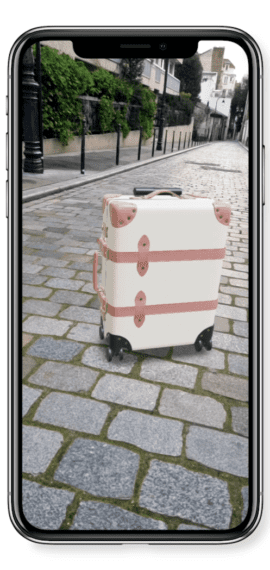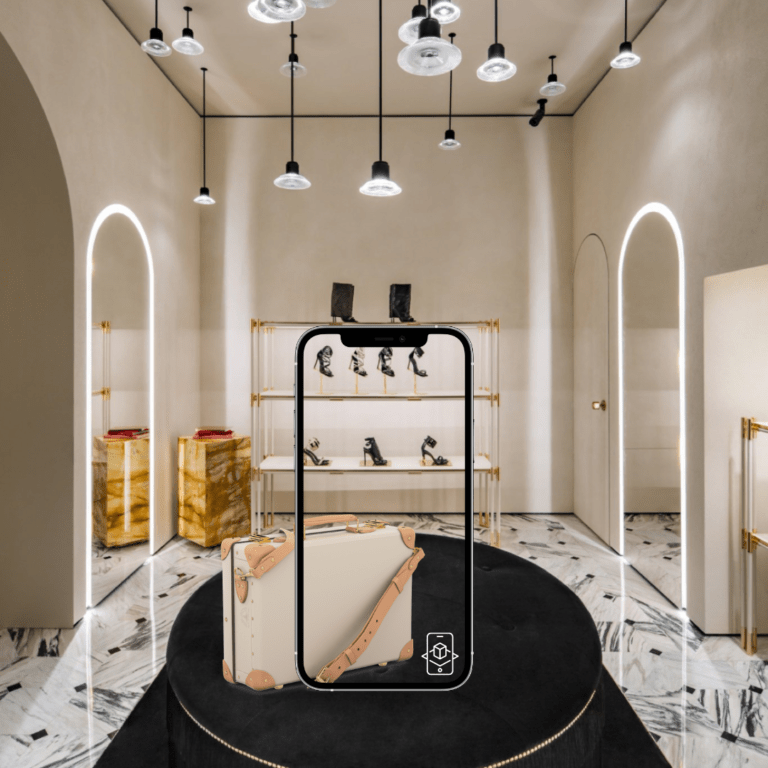The importance of 3D configurators for customer experience in the luxury industry
The importance of 3D configurators for customer experience in the luxury industry Table of Contents In the luxury industry, where attention to detail, exclusivity, and
During recent years, the glTF file format has gained more and more prominence, due to its functionality and the wide variety of applicazioni. Therefore, this article will explain what a glTF file consists of and how it can best be used.
glTF file format realized by SmartPixels for TAG HEUER
The very first glTF file format was developed in 2012 by COLLADA working group members. It was then made available to the general public in October 2015. The purpose was to create a file format that :
• dealt grazie compact files,
• acted quickly when loading,
• was well-processed during runtime,
• was capable of converting a thorough 3D scene representation.
glTF is the most efficient file format for 3D renderings, covering geometries, textures, and animations. However, it is still missing features for physical behavior, sounds, e interactions, which are crucial when working on complex scenes.
A more technical definition di glTF file format can be explained as follows: “glTF (Graphic Language Transmission Format) is a royalty-free specification for transmitting and loading 3D scenes and models into engines and software applications. The size of 3D assets and the runtime procedure necessary for unpacking and use in applications are reduced by glTF”.
To enable the interoperable use of 3D content across industry applications, glTF defines a publishing format that streamlines creative workflows e interactive services.

The need for efficient file formats became increasingly clear as the digital revolution progressed with its many applicazioni. Technologies like Realtà Aumentata e virtual-try-on gained popularity, so a new file format was needed to transfer 3D data models easily.
Before the advent del glTF file format, the most used file types were the FBX and the OBJ. However, both of them proved to be not as efficient, fast, and smooth as the glTF one.
L'industria FBX file format was mainly exploited for its motion acquisition capabilities. Furthermore, this file typology has been widely used for its high-end modeling features. Finally, the speed e effectiveness of the FBX played a major role in its implementation. In fact, the FBX file is easy e fast to both write e read.
On the other hand, the OBJ file is a common 3D image format that can be exported e opened by a variety of 3D image editing software programs. OBJ files are utilized by Wavefront’s Advanced Visualizer program in order to outline and store three-dimensional objects. To illustrate, these file formats can easily encode il surface geometry di 3D objects.
Although, if the purpose is to transfer 3D renderings’ software quickly and in real time, and the used platform supports a more contemporary format, glTF overperforms compared to FBX and OBJ.
3D rendering of a Paco Rabanne perfume realized by SmartPixels (360° motion)
L'industria glTF format, known for its low weight e superior visuals, is gaining traction as an open-source norm nelle 3D trade e many web services.
• 3D scenes’ depiction: glTF can compress the mesh (3D geometries) very effectively.
• 3D catalogs for e-commerce: it works flawlessly with the major 3D APIs available on Web (WebGL) and desktop (OpenGL, Vulkan ecc.).
• Realtà Aumentata: due to of its rapidity and legibility, this format is quickly taking over as the industry standard for Augmented Reality solutions.
• NFTs and Metaverse: glTFs have the ability to reduce the runtime process necessary for unpacking and using 3D assets in applications. For its ease of transportability, this file can be widely used for web3 applications.

Augmented Reality (AR) is an interactive experience that combines the real world grazie computer-generated content. AR is defined as a system that combines real and virtual realms, allows for real-time interaction , and accurately registers virtual and real objects as 3D renderings.
To facilitate and make Gestione delle risorse 3D interoperable across applications, there has always been a considerable effort in search of shared file formats. It seems that the glTF file format might have solved these issues.
In terms of technology, glTF describes the 3D asset hierarchy using JSON, as well as geometries, and textures. For animations, it uses a binary payload. On the other hand, it supports textures nelle JPEG e PNG formats. Furthermore, it supports PBR (Physically Based Rendered) materials, which are the current most popular standard nelle 3D applications.
Because of its characteristics, its speed, e readability, this format is swiftly taking over as the industry norm di Realtà Aumentata applications. In fact, the glTF format is recommended if the need is to effectively transfer 3D scene data over the Internet for visual representation in a remote application, like Augmented Reality.
SmartPixels exploits glTF file formats to produce Augmented Reality solutions. Once a product’s 3D rendering has been finalized, it can be exported in a glTF file format in order to create engaging and interactive 3D experiences for our clients.
SmartPixels is an expert in the creation of photo-realistic 3D visuals and personalization experiences. Do not hesitate to contact the team to learn more!
The importance of 3D configurators for customer experience in the luxury industry Table of Contents In the luxury industry, where attention to detail, exclusivity, and
3D rendering vs 2D: what are the benefits of one over the other? Table of Contents 3D rendering offers a significant leap in realism compared
How do 3D product configurators reduce e-commerce returns? Table of Contents Overview of e-commerce product returns % of people who claim to retunr their online
Omnichannel strategy: the keys to a successful experience Chloé Tokyo store with a personalization experience created by SmartPixels The global pandemic has forced brands around
How AR helps luxury brands to build immersive experiences What is Augmented Reality? Augmented Reality solution by SmartPixels Augmented Reality is a technology that enables
Deep-dive into glTF file format During recent years, the glTF file format has gained more and more prominence, due to its functionality and the wide variety